In the huge space of the universe, there are amazing things that amaze people and make us appreciate nature. One of these incredible events is the solar eclipse. It's when the sun, which gives us light and life, is temporarily covered, making a strange shadow on Earth. So, what is a solar eclipse and how does it happen? Explore our blog to find out and learn about the cosmos. It's a cool experience for students and anyone curious about the universe.
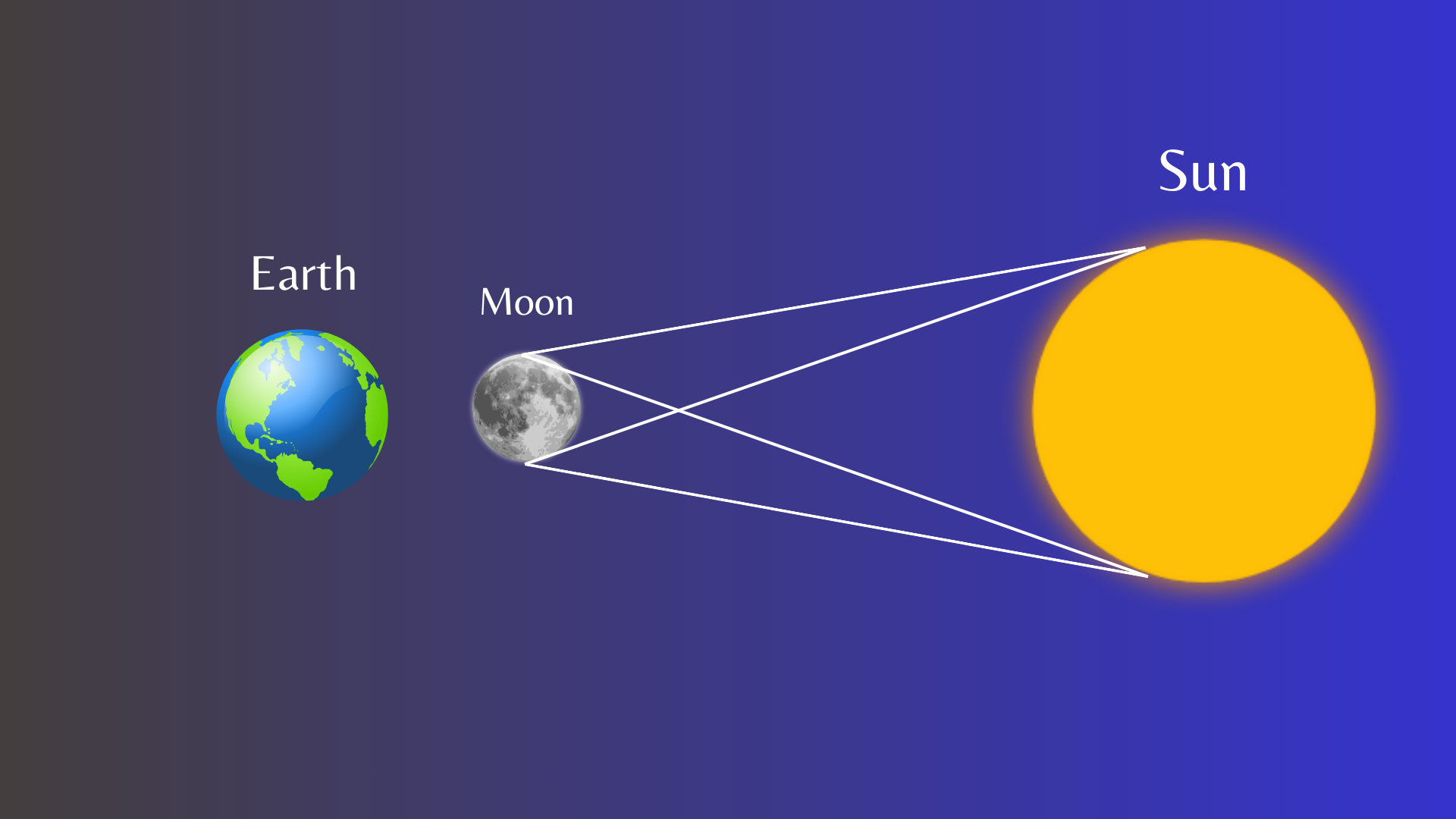
This year, Mark your calendars for April 8th, 2024, because a total solar eclipse event is about to happen in the skies of North America. The solar eclipse time will move across the United States from around 2:27 p.m. to 3:35 p.m. Eastern time.. This isn't just any eclipse; it's the Great North American Eclipse, and it promises to be an unforgettable experience. However, a partial eclipse might be visible in India.
What is Eclipse?
An eclipse is an astronomical event that happens when one celestial object blocks another from view, or when it moves into the shadow of another object. The most common types of eclipses are solar & lunar eclipses:
Solar Eclipse Definition: A solar eclipse is an astronomical phenomenon that occurs when the Moon passes between the Earth and the Sun, casting a shadow on Earth and blocking all or part of the Sun's light in some areas.
Lunar Eclipse Definition: A lunar eclipse is an astronomical event that occurs when the Moon moves into the Earth's shadow, causing the Moon to be darkened.
Brief Introduction to Solar Eclipses
Let's start with the basics. What is solar eclipse? Well, it's like a cosmic game of hide-and-seek between the sun, the moon, and the Earth. Imagine you're standing on Earth, looking up at the sky. Normally, you see the sun shining brightly, lighting up the world. But during a solar eclipse, something remarkable happens – the moon moves between the sun and the Earth, casting its shadow on our planet. As a result, the sun appears to be covered, either partially or completely, creating a mesmerizing celestial display.
Types of Solar Eclipses
Not all solar eclipses are the same – there are different types, each with its unique characteristics. The three main types of solar eclipses are partial, total, and annular.
Partial Solar Eclipse: In a partial solar eclipse, the Moon covers only a part of the Sun. It's like taking a bite out of a cookie – you can still see most of the Sun, but a small portion is hidden behind the moon's shadow. It's not as dramatic as a total eclipse, but it's still pretty cool to see.
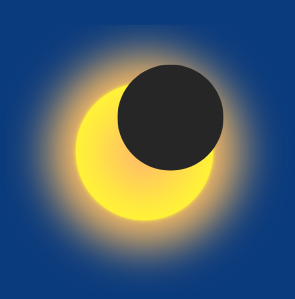
Annular Solar Eclipse: In an annular solar eclipse, the moon is at a farther point in its orbit around Earth, appearing smaller than the sun. As a result, when it passes in front of the sun, it doesn't fully cover it. Instead, a ring of sunlight – known as the "ring of fire" – encircles the dark silhouette of the moon, creating a spectacular sight.
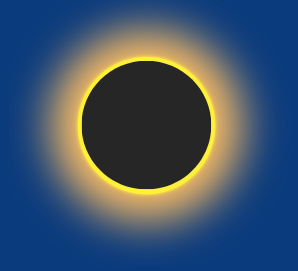
Total Solar Eclipse: Now, this is the grand spectacle that eclipsophiles (those who love eclipses) eagerly await. Here Moon decides to play hide-and-seek with the Sun. During a total solar eclipse, the Moon completely covers the Sun, making it look like nighttime during the day. It's like a big celestial blackout, but with a stunning ring of light around the edges of the Moon called the "solar corona." Total solar eclipses are rare treats and often leave people in awe.
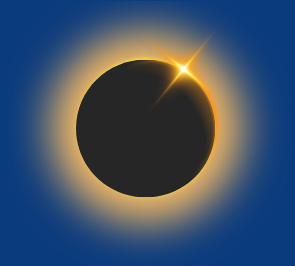
Hybrid Solar Eclipse: A hybrid solar eclipse is like a mix of a total and annular eclipse. It starts as one type and then switches to another along its path. It's like the eclipse can't decide which one it wants to be!
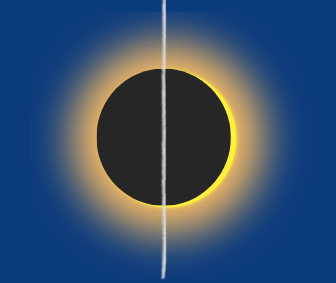
Why Don't We Have Solar Eclipse Every Month?
Now, you might be wondering, why don't we have a solar eclipse every month? Well, it all comes down to a perfect cosmic alignment. You see, the moon orbits around the Earth, and the Earth orbits around the sun. But their orbits aren't perfectly aligned all the time. A solar eclipse occurs only when the sun, moon, and Earth align in a straight line – a rare celestial rendezvous.
Path of Totality
Alright, let's imagine the path of totality for a solar eclipse like a superstar's red carpet walk. So, when the moon decides to throw shade on the sun, it doesn't do it everywhere at once. Instead, it picks a special runway where the show is going to be jaw-dropping. This runway is called the path of totality.
So, when the eclipse happens, people in the path of totality see something magical. The moon covers the sun completely for a short time. Day turns into twilight, stars appear, and the sun's outer atmosphere glows beautifully. It's like a once-in-a-lifetime cosmic show.
But if you are not in the path of totality, don't worry! You can still see the eclipse, just not the full show. It's like watching a concert from far away instead of up close. Whether you're in the path of totality or not, a solar eclipse is always an incredible sight!
Safety First!
Alright, students, when the Solar Eclipse happens, it's super exciting to witness, but remember, safety always comes first.
First off, never, ever look directly at the sun during a solar eclipse, even if it's partially covered by the moon. Why? Because the sun's rays can seriously hurt your eyes and cause permanent eye damage.
So, How Can You Safely Enjoy this Epic Event?
Well, you can use specially designed solar eclipse glasses or handheld viewers. They are like wearing cool shades that protect your eyes from the sun's intense light. If you don't have eclipse glasses, don't worry! There are other safe ways to watch the eclipse. You can create a pinhole projector with simple materials like cardboard and aluminum foil. It's like making your own mini-movie theater for the eclipse! Just poke a small hole in the cardboard, let the sunlight pass through it, and catch the image of the eclipsed sun on a surface like a piece of paper.
Another fun option is to use a telescope or binoculars, but be careful! You must attach a solar filter to the front of these devices to protect your eyes.
Remember, whether you are using eclipse glasses, a pinhole projector, or solar filters on your telescope or binoculars, always supervise young children to ensure they are using them properly. Safety always comes first when witnessing the wonders of the universe.
Cultural Significance
Throughout history, different cultures around the world have interpreted solar eclipses in various ways, often mixing science with mythology and folklore. Here are a few examples:
1. Ancient Civilizations: Many ancient civilizations saw solar eclipses as powerful omens or signs from the gods. Some believed that they were warnings of impending disasters, while others thought they were messages from celestial beings.
2. Mythology and Folklore: In Norse mythology, people believed that solar eclipses occurred when the wolves Skoll and Hati chased and caught the sun and the moon. In Chinese folklore, it was believed that a dragon was trying to eat the sun, and people would make loud noises to scare the dragon away.
3. Unity and Celebration: In some cultures, solar eclipses were seen as opportunities for communities to come together and celebrate. Ancient Greeks would often put aside their differences during eclipses and gather to watch the spectacle.
4. Scientific Curiosity: Solar eclipses have also sparked scientific curiosity throughout history. They provide rare opportunities for scientists to study the sun's corona, the outer atmosphere of the sun, which is usually too dim to see against the sun's bright glare.
5. Modern Day: Today, solar eclipses still capture our imagination. People travel from all over the world to witness these events, often gathering in large groups to share the experience. They serve as reminders of the vastness and wonder of our universe.
So, whether you see solar eclipses as mystical phenomena, scientific marvels, or simply awe-inspiring spectacles, there is no denying their cultural significance throughout human history. They remind us of our place in the cosmos and our endless curiosity about the world around us.
Power of Solar Eclipse Radiations
Even though the Sun's light is mostly blocked during an eclipse, some rays still manage to slip through. These rays carry all sorts of powerful energy with them, including infrared, ultraviolet, and even X-rays!
But why is this energy so important? Well, for one thing, scientists can learn a lot about the Sun's outer atmosphere, called the corona, by studying these special rays during an eclipse. They can use special instruments to see things they can't normally see when the Sun is shining brightly.
Plus, solar eclipse radiation can also affect our planet in different ways. For example, it can influence the Earth's atmosphere, the temperature might drop, birds might stop chirping, and animals might get a bit confused because it suddenly looks like nighttime during the day. Some people believe it can also have an impact on living things, although scientists are still studying that part.
So, the next time you see a solar eclipse, remember that even though it might look like the Sun is taking a break, there's still a lot of action happening in the shadows, with powerful rays of solar eclipse radiation zipping through space and teaching us more about the incredible star at the center of our solar system.
What to do After a Solar Eclipse?
Once the eclipse is over, the fun doesn't have to stop! Here's what you can do after witnessing this celestial spectacle:
1. Reflect: Take a moment to think about what you just saw. Consider how incredible it is that the moon and sun, which are millions of miles away, can create such an amazing sight right before your eyes. Reflecting on the experience can deepen your appreciation for the wonders of the universe.
2. Share Stories: Solar eclipses have fascinated people for centuries, so why not share your experience with others? Tell your friends, family, or classmates about what you saw and how it made you feel. You might even inspire someone else to become interested in astronomy!
3. Stay Safe: During a solar eclipse, you should never look directly at the sun without proper eye protection. But once it's over, you can safely remove your eclipse glasses or use other methods to view the sun safely again.
4. Keep Observing: Eclipses may be rare events, but there's always something interesting happening in the sky. Whether it's spotting planets, watching meteor showers, or simply gazing at the stars on a clear night, there is plenty to see if you keep looking up.
So, while the solar eclipse may have come to an end, your journey of discovery and wonder in the universe is just beginning! Keep exploring, keep learning, and keep looking up at the sky. Who knows what other cosmic surprises await you?
Conclusion
Solar eclipses are amazing events in nature, like a big show put on by the universe. They make us feel amazed and captivated. Whether it's the total darkness of a total eclipse or the slight shadow of a partial eclipse, each moment shows us how beautiful and fascinating the universe is. So, when you hear about a solar eclipse happening, take a minute to go outside, look up at the sky, and enjoy the celestial dance that's been fascinating to people for thousands of years. There is always something incredible waiting for us out there in space.
FAQs on The Mystery of Solar Eclipse
1. When is the Solar eclipse 2024 in India date and time?
There won't be a solar eclipse visible in India in 2024. The upcoming total solar eclipse on April 8, 2024, will be visible in parts of North America. The solar eclipse time will move across the United States from around 2:27 p.m. to 3:35 p.m. Eastern time.
2. What is an eclipse?
An eclipse is an astronomical event where one celestial body blocks the light from another celestial body from reaching an observer on Earth. There are different types of eclipses, like solar eclipses (Sun blocked by the Moon) and lunar eclipses (Earth blocking the Sun's light from reaching the Moon).
3. What is a solar eclipse?
A solar eclipse occurs when the Moon passes between the Sun and Earth, casting a shadow on Earth's surface. During a total solar eclipse, the Moon completely covers the Sun's bright face, while in a partial eclipse, only part of the Sun is covered.
4. When is the next solar eclipse in India?
The next total Solar Eclipse is going to happen on August 12, 2026. People in Asia, Africa, Europe, and North America will be able to see it.
5. Is the solar eclipse visible in India?
The total solar eclipse of April 8, 2024 is not visible in India. It will be observable in parts of North America.
6. What is hybrid solar eclipse?
A hybrid solar eclipse is a rare type of eclipse where the path of totality (where the Sun is completely blocked) is very narrow. In some areas, the eclipse might appear partial, while in others it might be total.
7. When was the last solar eclipse?
There are multiple solar eclipses every year, so to answer accurately, I'd need to know which one you're referring to. You can find information on past eclipses through online searches.
8. What causes a solar eclipse?
A solar eclipse occurs because the Moon orbits Earth, and their paths sometimes intersect. When this happens, the Moon can cast a shadow on Earth's surface, causing an eclipse.







